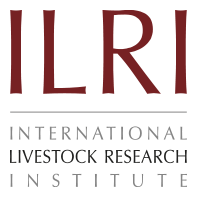Merino
South African Merino
Origin and distribution: Merino sheep were introduced into South Africa in 1789 with imports of Spanish Merinos. By the mid-1800s the breed was spread over many parts of South Africa. From 1891 onwards, American Vermont type Merinos were introduced. The South African Merino is a composite of Spanish, Saxony, Rambouillet, American and Australian Merinos (Mason 1996). These sheep are found mainly in South Africa and Zimbabwe where the climate is semi-arid to sub-humid, and in Kenya and Lesotho at medium and to high altitudes under ranching and agro-pastoral management systems (DAGRIS 2005).
Physical characteristics: They are uni-coloured with white coat and fine-wool. They are heavy animals: males have 100 kg mature weight and females 60 kg (DAD-IS 2005). Results from DAGRIS (2005) indicate that average weights at birth, weaning and 18 months in female animals are 3.58 kg (range = 2.5-4.5 kg), 15.53 kg (range = 10.7-24.2 kg), and 56.2 kg (32.0-65.3 kg) respectively.
Peculiarity: The breed is adapted to high rainfall grassland regions. Animals of this breed are reported to be less susceptible to fly strike because of their smooth body in comparison to sheep with skin folds.
Breed status: There are about 15 million merino sheep in South Africa out of the total of 25 million sheep. A breed society was formed in 1921 but later became defunct. Another breed society was formed in 1947, which now has 714 members with 252 665 stud sheep. Some 10 215 males and 13 418 females are registered with the studbook and 8 150 males and 244 515 females are registered with the breed society (DAD-IS 2005). The society offers record keeping of all stud histories, performance testing of stud sheep, ram progeny tests on promising young rams, the importation of ram semen and export of rams to neighbouring states [CS 1.14 by Olivier]; [CS 1.26 by Ramsey et al.].
Based on the wool type and management level, different types of merino sheep were developed for different regions in South Africa. Wool types are differentiated as strong wool (25 micron) to the finest wool (16 micron). Sheep varieties vary from plain-bodied, which are meant for the drier Karoo regions to medium bodied, which are meant for the Lucerne lands of the Western Cape, Northern Free State and irrigated areas.
Utility: The South African Merino is mainly used for its wool; the fleece weight per year is 5.5 kg (DAD-IS 2005). Ewes produce an average of 7.15 kg wool ranging from 2.6-9.7 kg. The wool is medium to strong white, which is over-crimped in comparison to the Merino wool of the same strength. The wool on average measures 22-23 microns without any kemp fibres. Average staple length is 7.1 cm and ranges from 5.97-8.29 cm (DAGRIS 2005). Several studies have been made on genetic parameter estimates for weight and fleece traits (Snyman et al. 1996; Snyman et al. 1997; Cloete et al. 1998; Herselman et al. 1998; Snyman et al. 1998a; Snyman et al. 1998a; Groenewald et al. 1999; Neser et al. 2001)[CS 1.14 by Olivier]; [CS 1.26 by Ramsey et al.].
References
Cloete S.W.P. Olivier J.J. Snyman M.A. and du Toit E. 1998. Genetic parameters and trends in a selection experiment for increased clean fleece weight involving South African Merinos. Australian Journal of Experimental Agriculture. 38(5):427-432.
DAD-IS, accessed in Oct 2005:http://dad.fao.org/en/home.htm
DAGRIS, accessed in Oct 2005:http://dagris.ilri.cgiar.org
Groenewald P.G.J. Olivier J.J. and Olivier W.J. 1999. Heritability estimates for Merino sheep obtained from a national progeny test. South African Journal of Animal Science. 29(3):174-178.
Mason I.L. 1996. A World Dictionary of Livestock Breeds, Types and Varieties. Fourth Edition. CAB International. Wallingford. UK. pp. 252.
Neser F.W.C. Erasmus G.J. and van Wyk J.B. 2001. Genetic parameter estimates for pre-weaning weight traits in Dorper sheep. Small Ruminant Research. 40(3), 197-202.
Snyman M.A. Cloete S.W.P. and Olivier J.J. 1998. Genetic and phenotypic correlations of total weight of lamb weaned with body weight, clean fleece weight and mean fibre diameter in three South African Merino flocks. Livestock Production Science. 55(2)157-162.
Snyman M.A. Erasmus G.J. van Wyk J.B. and Olivier J.J. 1998. Genetic and phenotypic correlations among production and reproduction traits in Afrino sheep. South African Journal of Animal Science. 28(2):74-81.
Snyman M.A. Olivier J.J. Erasmus G.J. and van Wyk J.B. 1997. Genetic parameter estimates for total weight of lamb weaned in Afrino and Merino sheep. Livestock Production Science. 48(2):111-116.
Snyman M.A. Olivier J.J. and Olivier W.J. 1996. Variance components and genetic parameters for body weight and fleece traits of Merino sheep in an arid environment. South African Journal of Animal Science.26(1):11-14.
Related Literature
Herselman M.J. Olivier J.J. and Snyman M.A. 1998. Studies on small ruminant breeds with inherent differences in fibre production and ewe productivity. 1. Relationship between ewe productivity and wool production potential. South African Journal of Animal Science. 28(1):1-8.Mason I.L. 1996. A World Dictionary of Livestock Breeds, Types and Varieties. Fourth Edition. CAB International. Wallingford. UK. pp. 252.
Olivier W.J. Snyman M.A. van Wyk J.B. and Erasmus G.J. 1998. Genetic parameter estimates for fitness traits in South African Merino sheep. Livestock Production Science. 56(1):71-77.
Pointing, K., 1980. Sheep of the world. Blandford Press Ltd., Link House, West Street, Poole, Dorset, Great Britain. pp. 34.
Related websites
http://gadi.agric.za/news/reports/research2005/
ResearchReport_2005.htm#3
http://www.arc.agric.za/institutes/aii/main/pub.htm
http://www.capewools.co.za/the_history_of_wool.asp
http://www.ansi.okstate.edu/breeds/sheep/
http://www.sasas.co.za/publications/Cloete3.pdf?sID
http://www.sasas.co.za/publications/duguma3.pdf?sID
http://www.sasas.co.za/publications/ferreira.pdf?sID
http://www.sasas.co.za/publications/Neser2001.PDF?sID
http://www.sasas.co.za/publications/cloete.pdf?sID
http://www.sasas.co.za/publications/duguma2.pdf?sID
http://www.sasas.co.za/publications/Neser991201.PDF?sID
http://www.sasas.co.za/publications/cloetejj2.pdf?sID
http://www.sasas.co.za/publications/Sheridan.PDF?sID
http://www.sasas.co.za/publications/Olivier2001.PDF?sID
http://www.sasas.co.za/publications/Neser3.PDF?sID
http://www.sasas.co.za/publications/duguma2.pdf?sID
http://www.sasas.co.za/publications/Naidoo.pdf?sID
http://www.sasas.co.za/publications/Hoon.PDF?sID
http://www.sasas.co.za/publications/hoffman.pdf?sID
http://www.sasas.co.za/publications/cloete.pdf?sID






